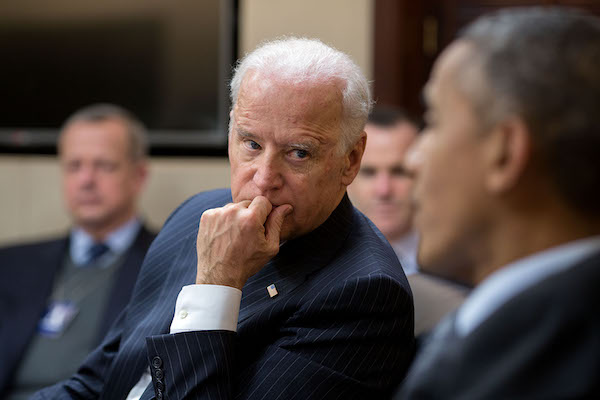Clean energy and electric vehicle advocates were ecstatic when it became clear that the Joe Biden and Kamala Harris ticket would win the US Presidential election over incumbent Donald Trump. We know that Biden is very supportive of moving the grid toward a higher percentage of renewable sources of energy and implementing regulations and programs to significantly increase the sales of electric vehicles and grow EV charging infrastructure.

But with the Democrats most certainly not controlling Congress, how many green-oriented programs will the Biden-Harris administration be able to execute over the next 4 years?
As president, Biden will lead the world to address the climate emergency and lead through the power of example, by ensuring the U.S. achieves a 100% clean energy economy and net-zero emissions no later than 2050.
Biden Climate Plan
At a high-level, here are electric vehicle-related programs that we can expect the Biden administration to pursue:
- Revisions to the Federal EV tax credit: Increasing the current manufacturer cap of 200,000 EVs sold which begins the tax credit phase out, up to 600,000 vehicles; and potentially reducing the maximum credit amount of $7,500 to $7,000. Biden’s plan would likely also limit the credit to households with less than $250,000 in taxable income. (Green Car Reports) To the greatest extent possible, to prioritize the purchase of vehicles made in America. (Biden Climate Plan)
- Government Vehicle Procurement: Moving the federal government procurement system toward 100 percent “clean energy and zero-emissions vehicles.” (Car and Driver) Using the Federal government procurement system – which spends $500 billion every year – to drive towards 100% clean energy and zero-emissions vehicles. (Biden Climate Plan)
- New Fuel Economy Standards: Develop new fuel economy standards aimed at ensuring 100% of new sales for light- and medium-duty vehicles will be electrified and annual improvements for heavy duty vehicles. (Biden Climate Plan)
- 2050 Net-Zero Emissions Regulations: Establish of an enforcement mechanism to achieve net-zero emissions no later than 2050, including a target no later than the end of Biden’s first term in 2025 to ensure we get to the finish line. The enforcement mechanism will achieve clear, legally-binding emissions reductions with environmental integrity. (Biden Climate Plan)
- Investment in EV Charging Infrastructure: Work with governors and mayors to support the deployment of more than 500,000 new public charging outlets by the end of 2030. (Biden Climate Plan)
- Cash for Clunkers: Provide rebates for car owners to replace older vehicles with new, more efficient/lower-polluting models. (Green Car Reports)
- Achieve 100% Renewable Energy Sources to Power the Grid by 2035: Require electric utilities to get more of their power from carbon-free sources — including wind, solar, nuclear and hydroelectric — and to improve the energy efficiency of their systems or face penalties. (Washington Post)
- Federal Fuel-Economy and Emissions Standards: Biden could also stop the fight with California over fuel-economy standards and get back to promoting one national standard. (Green Car Reports)
- Demand a worldwide ban on fossil fuel subsidies: Secure a global commitment to eliminate fossil fuel subsidies by the end of Biden’s first term. Lead by example, with the United States cutting fossil fuel subsidies at home in Biden’s first year and redirecting these resources to the investment in clean energy infrastructure. In 2015 International Monetary Fund study showed that efficient fossil fuel pricing would have reduced global carbon emissions by nearly 30%. (Biden Climate Plan)
“By 2030 there could be 4 million EVs on US roads as a result of those standards, almost 60% more than if the Trump administration’s rules had taken effect,” said Crooks, though that additional 4 million only represents about 1.5% of the 275 million vehicles expected on U.S. roads in 2030.
Ed Crooks, Wood Mackenzie vice-chair for the Americas sector – via Utility Dive
Following is a link to Biden’s climate action plan and list of and links to various articles about a Biden presidency and how it might impact US EV adoption:
- The Biden Plan for a Clean Energy Revolution and Environmental Justice
- Will There Be an EV in Every Driveway under the Biden Administration? – Car and Driver, November 14, 2020
- Why A Biden Presidency Will Accelerate Change to Electric Cars: 10 Talking Points – Green Car Reports, November 8, 2020
- Senate uncertainty muddies clean energy path, but offshore wind, EVs poised to gain with Biden: analysts – Utility Dive, November 9, 2020
- Joseph Biden Aims To Improve US EV Tax Credit, Restore It For Tesla & GM – CleanTechnica, November 1, 2020
- Biden Plan Would Broaden EV Tax Credit; Include Cash For Clunkers Reboot – Green Car Reports, July 16
- Biden, in new climate plan, embraces more aggressive steps – Washington Post, July 14, 2020
 Announcing the acquisition of EVAdoption by Paren →
Announcing the acquisition of EVAdoption by Paren →
